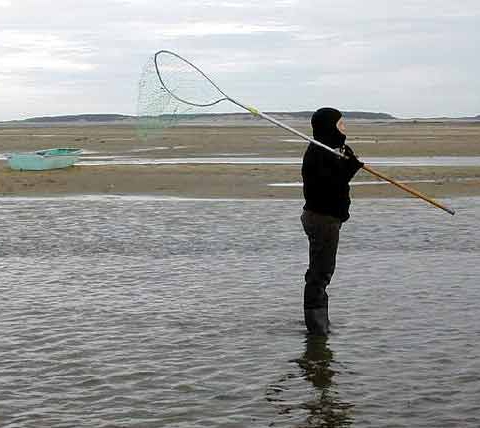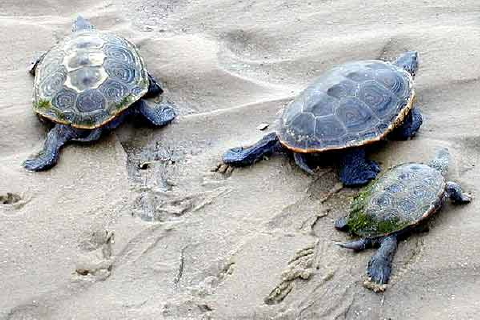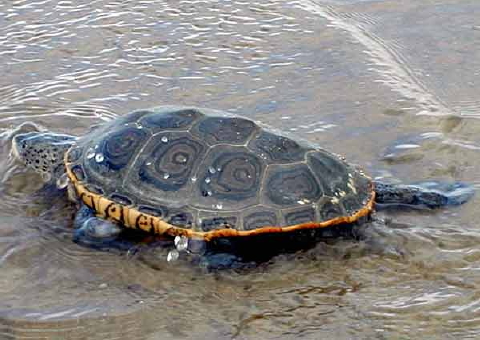Is This Outfit Appropriate to Capture Cold-Blooded Animals?Â
When on 22 April turtles began emerging from their winter sleep, and by 1 May when water temperature over the tidal flats had reached 72° Fahrenheit, it seemed the terrapin season had sprinted to a record start. We should know better. After ten days of persistent easterly winds blowing off the North Atlantic and storm fronts smothering the Cape in grayness, water temperatures have plummeted. This morning’s reading barely hit 55°F, the apparent threshold temperature in Wellfleet Bay for terrapins to enter and leave brumation. Yesterday not a single female was seen swimming through the channel nor had one been captured in Blackfish Creek this entire week. Research assistant Maureen Ryan, who reported for duty from college in Wyoming on Tuesday, wondered aloud what had become of those balmy swimming trunk days I wrote about in early May. Was it some cruel hoax? If so, the turtles weren’t laughing.
Two Females and a Male Terrapin Return to Blackfish Creek
The three terrapins captured this morning were all caked in mud as though they had just emerged from brumation. Yet, all three had already been seen this year. Female 920 came through the rip paired with a male on 23 April; male 720 swam the channel on 29 April. Terrapin 1006, another female, was spotted on both 5 and 10 May. So, it was a surprise to see them all painted in mud, cold to the touch, and acting very sluggish.
Number 720, the male on the right, and #920, the female on the left, have both acquired a ring of light green algae clinging to their marginal scutes. Both had absolutely clean carapaces when photographed in late April.
Female Terrapin #1006 Slips into Blackfish Creek
The change in Terrapin 1006 was equally dramatic, although not physical. Her behavior had completely changed in the last two weeks. When first observed on 5 May, she was described as “quite activeâ€; on the 10th, she was termed “aggressive.â€Â Today, though, she was passive and sluggish. She moved through the rip so slowly that no net was needed to capture her. She could barely maintain controlled headway.


